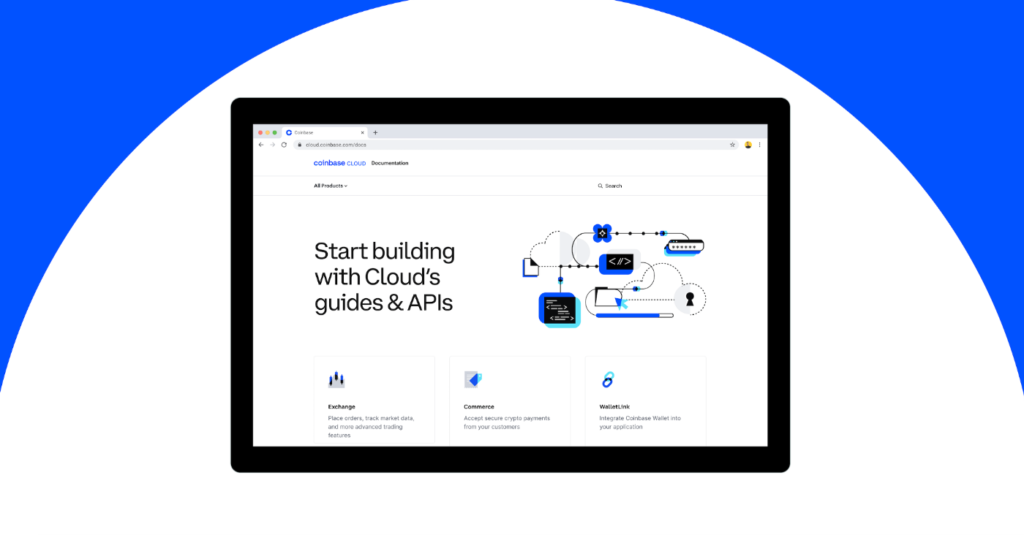-
Coinbase Cloud has introduced notable improvements to its Ethereum staking service.
-
The impact of this bug underscored the risks of overreliance on a single client, in this case, Ethereum’s most widely used client, Geth.
-
Nethermind and Erigon were chosen after a rigorous evaluation considering past client stability, metrics, and compatibility with Coinbase’s existing infrastructure.
Coinbase, a leading cryptocurrency exchange, has introduced notable improvements to its Ethereum staking service, aiming to mitigate the concentration risk associated with validator client software. By incorporating additional execution clients into its architecture—namely Nethermind and Erigon—Coinbase is taking significant steps to enhance the robustness of its operations and, by extension, the Ethereum network as a whole.
Expanding Beyond Geth: Coinbase Cloud Empowers Ethereum Staking
Coinbase Cloud’s recent update broadens the Ethereum staking nodes’ execution layer, previously anchored by the ubiquitous Geth client software. The importance of Coinbase diversifying client usage, given a notable bug in the Nethermind client that temporarily sidelined some Ethereum validators, cannot be overstated.
Coinbase plans to distribute Ethereum staking usage among Geth, Nethermind, and Erigon by gradually transitioning approximately half of its validators to the Nethermind execution client first. Following this, Coinbase intends to add support for the Erigon client.
Also, Read Coinbase Effectively Ends Bitcoin SV Support.
In the long term, the company aims to maintain an even distribution of its validators across all three clients—Geth, Nethermind, and Erigon. This strategy ensures a diverse and resilient infrastructure, minimizing the risks of depending on a single client.
The Nethermind client bug incident occurred roughly a month before Coinbase announced its plans to diversify Ethereum staking clients. This bug impacted around 8% of the Ethereum network’s validators.
The Nethermind bug is an example of a software vulnerability that can disrupt the normal functioning of blockchain validators. Validators are network participants responsible for processing transactions and proposing new blocks.

Suppose these validators encounter issues, such as software bugs. In that case, they may temporarily fail to perform their duties correctly, potentially leading to reduced network performance or a temporary decrease in the network’s ability to process transactions.
The impact of this bug underscored the risks of overreliance on a single client, in this case, Ethereum’s most widely used client, Geth. The event highlighted the importance of client diversity within the Ethereum network’s architecture.
Diversity among clients helps to safeguard the network by ensuring that if one client encounters issues, the others can continue to operate, maintaining the network’s integrity and functionality. This was a motivating factor for Coinbase to implement additional clients to manage their Ethereum staking services.
By gradually transitioning around half of their validators to Nethermind and subsequently incorporating Erigon support, Coinbase offers a forward-thinking approach to client diversity. Coinbase will roll out this adjustment seamlessly, requiring no customer action, thereby upholding its reputable record of safeguarding staked assets.
The Infrastructural Shift: A Meticulous Client Evaluation Process
With Coinbase’s expansion to support Nethermind and Erigon execution clients, we enter a new phase of client diversity for Ethereum staking. Initially sparked by the overwhelming reliance on Prysm as the primary consensus client, this change extends to execution clients after Geth’s unrivalled dominance.
Coinbase Cloud meticulously screens potential clients, balancing the pursuit of diversity with stringent technical benchmarks for performance and reliability. Nethermind and Erigon were chosen after a rigorous evaluation considering past client stability, metrics, and compatibility with Coinbase’s existing infrastructure.
A unified path forward for Ethereum’s resilience
The importance of this multifaceted client infrastructure is invaluable to the health of the entire Ethereum ecosystem. Ensuring the stability and performance of the network, Coinbase Cloud’s approach to Ethereum staking is indicative of a broader industry commitment to decentralization and security.
The rationale behind Coinbase’s plan to evenly distribute Ethereum staking usage among Geth, Nethermind, and Erigon is to minimize the risks associated with a lack of client diversity, which became evident after a Nethermind client bug affected a portion of Ethereum validators. By diversifying the execution clients used for staking, Coinbase aims to fortify the network against potential bugs or vulnerabilities that could impact many validators if they were all using the same client.
This proactive approach not only enhances the security and reliability of the network but also aligns with the broader philosophy of decentralization inherent to blockchain technology. Ensuring no single execution client becomes a single point of failure, Coinbase’s strategy promotes a more robust and resilient Ethereum ecosystem, which benefits all network participants.
By diversifying its client structure, Coinbase effectively bolsters Ethereum validators against client-specific bugs and promotes a more resilient blockchain. The addition of Nethermind and Erigon represents an eagerness to incorporate innovation and progress, forecasting a dynamic future for Ethereum staking operations.
In conclusion, with the integration of these new clients, Coinbase Cloud stands as a paradigm of proactive measures taken to boost the Ethereum network’s dependability and diversity. An Ethereum blockchain designed for continuity and growth ensures customers’ staked assets are secure, benefiting the broader community.
Also, Read The SEC pressures Coinbase Exchange to shut down its services in the US.
